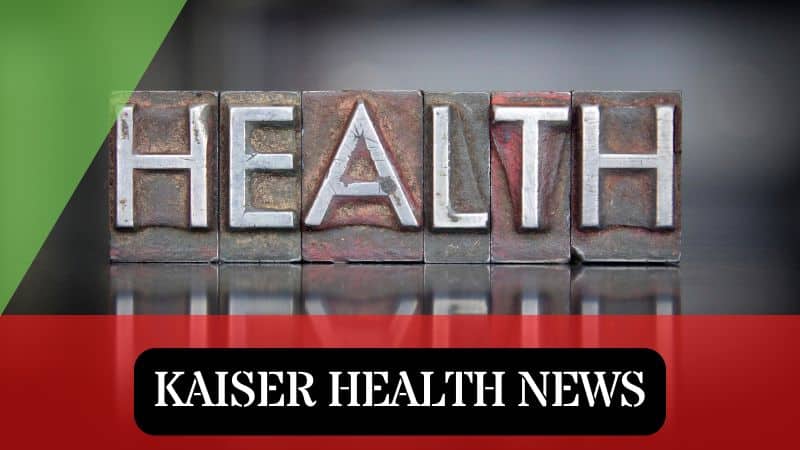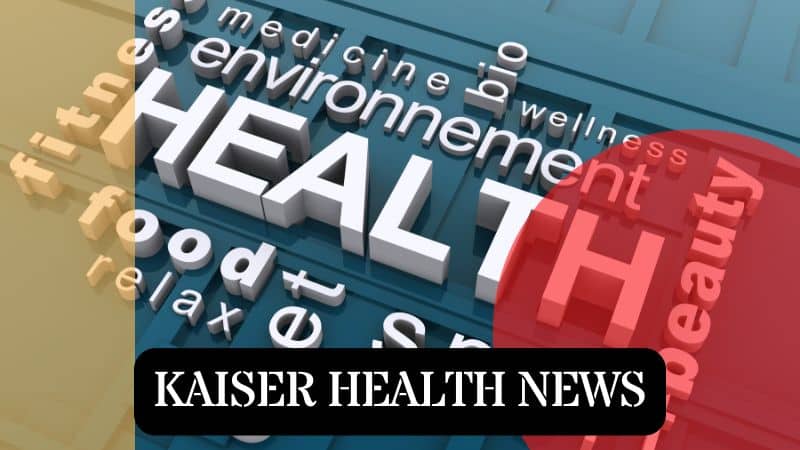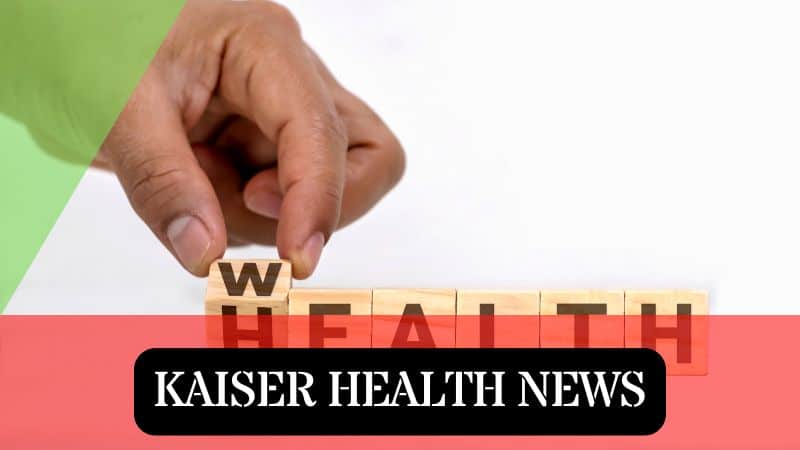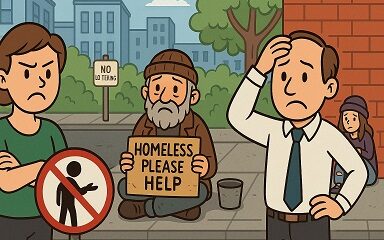Kaiser Health News
Mental Health ‘Ghost Networks’ — And a Ghostbuster

by Dan Weissmann
Thu, 11 May 2023 09:00:00 +0000
Many people searching for a therapist or psychiatrist turn to the list of in-network providers offered by their insurance plan. But often, many of the doctors on the list don’t take that insurance plan, aren’t accepting new patients, or simply don’t answer the phone. Researchers and journalists call this phenomenon a “ghost network.”
So, who you gonna call when you encounter a ghost network? A ghostbuster.
That’s where Abigail Burman comes in. Burman is a lawyer who has studied ghost networks and volunteers her “ghostbusting” services to help people in her life navigate these networks and obtain care.
In this episode of “An Arm and a Leg,” host Dan Weissmann speaks with Burman about what it took to get her friend the care she needed and what steps you can take to get insurance to pay for therapy.
Dan Weissmann
Host and producer of “An Arm and a Leg.” Previously, Dan was a staff reporter for Marketplace and Chicago’s WBEZ. His work also appears on All Things Considered, Marketplace, the BBC, 99 Percent Invisible, and Reveal, from the Center for Investigative Reporting.
Credits
Emily Pisacreta
Producer
Adam Raymonda
Audio Wizard
Afi Yellow-Duke
Editor
Click to open the Transcript
Transcript: Mental Health ‘Ghost Networks’ — And a Ghostbuster
Note: “An Arm and a Leg” uses speech-recognition software to generate transcripts, which may contain errors. Please use the transcript as a tool but check the corresponding audio before quoting the podcast.
Dan: Hey there–
So, one topic we have NOT addressed on this show until now has been mental health. And it’s not because it isn’t important, right?
Just ask anybody who’s lived through a multi-year global pandemic.
And it’s not like ACCESS to mental health care — figuring out how to pay for it, or how to get insurance to pay for it — isn’t a problem.
Actually, pretty much the opposite. It’s maybe the biggest problem. It’s just notoriously horrible.
We haven’t gone there because, well, number one: The horror stories are endless.
And two, I’ve had absolutely nothing to offer, in terms of what are we gonna do about it. Until now. Because now I’ve met somebody who has actually won a battle in this awful domain…
Abigail Burman: my name is Abigail Burman and I am an attorney specializing in consumer protection healthcare and technology.
Dan: Abigail’s also a policy expert on some of these problems And she’s become a problem-solver for people in her life.
Abigail Burman: It’s become a little bit of my superpower to just help friends find an in-network therapist or in-network psychiatrist.
Dan: Or, if there’s basically no such thing, to get their insurance to pay for an out-of-network provider.
She sent me a checklist she’d posted to an online forum, with the title, “A broad guide to getting therapy/psych appointments covered when you can’t find anyone in network”
It’s based on steps Abigail took on behalf of a friend recently, and it’s terrific.
It combines the usual unreasonable amount of persistence and grit, and time that not everybody has– and adds some key legal knowledge.
Now, this legal key won’t open every door, of course. It’s shape — and whether it’ll work at all for you– depends on where you get your insurance, and on where you live.
In fact, even with that legal knowledge on her side, the steps in Abigail’s checklist aren’t exactly what worked for Abigail in this case. It took more.
Again, more than is reasonable. More than most of us have in us, frankly.
But we’ll share what did work — because there ARE insights here that even us non-superheroes can definitely use :
And beyond the mechanics, the specific tips, I find Abigail’s approach — the spirit in which she suggests we apply ourselves to these problems– for ourselves or for others —really refreshing.
This is An Arm and a Leg, a show about why health care costs so freaking much, and what we can maybe do about it. I’m Dan Weissmann, I’m a reporter, and I like a challen.ge.
So our job on this show is to take one of the most enraging, terrifying, depressing parts of American life — and rarely has that word “depressing” carried more weight than in this story about mental health– and bring you something entertaining, empowering and useful.
Abigail’s personal super-powers grow out of her policy research.
Abigail Burman: So as with all good academic work, it started with a grudge. This is my super villain origin story.
Dan: It started during her first semester in law school, when she made an important discovery.
Abigail Burman: law school is uh, a toxic pressure cooker, and so I, like a lot of my classmates realized midway through that talking to someone would be a good idea.
Dan: So she looked up the therapists in her insurance company’s directory.
Abigail Burman: I called probably 20 doctors and didn’t hear back from anyone. I actually ended up seeing someone out of network.
Dan: And she got mad. And she decided: I’m gonna find out what the hell is going on here. So she spent pretty much the rest of law school researching exactly that.
And her research showed her: This thing she’d experienced? It was a known thing. It had a name.
Researchers and journalists called it a “ghost network.”
A “ghost network” is where your insurance company says to you: You need a therapist? Oh sure. Here’s a list of therapists who take our insurance– our “network directory.”
And maybe you call a few. Maybe you call twenty, like Abigail. Maybe you call 73, which is what one woman did, according to a recent Washington Post story. Yep. 73.
And they say, “What? No, we don’t take that insurance.” Or, “We’re not taking new clients.” Or nobody even answers the phone because it’s been disconnected for a long time.
And the problem isn’t that you’re having bad luck. The problem is: The network itself — all these providers supposedly waiting to take your call and take your insurance — is a ghost, a phantasm.
Of course, running into a ghost network can conjure up all the feelings of being ghosted.
Abigail Burman: That can be so isolating when you just think this is a personal annoyance rather than being able to name it as a bigger problem with the entire system.
Dan: I mean, it can also feel like, it can feel like a personal failure, right? Like, oh, a real adult could do this.
Abigail Burman: Exactly. If I just organized my life better, if I just tried harder, this would be better.
Dan: But Abigail’s research showed her: This is not a personal failing. A study of networks in just one city, Washington, DC, found that only half of the phone numbers listed even worked at all.
And Abigail’s everyday experience showed her: Those findings in Washington, DC, were not identifying an isolated trouble spot
.
Abigail Burman: I realized I was onto something when I would tell people about this and everyone has a story.
Dan: So she let her rage fuel years of academic work. She published some findings in a long article for the Yale Law and Policy Review called Laying Ghost Networks to Rest.
The paper documents the problem’s scale — spoiler alert, it’s REALLY big, and not limited to mental health — and lays out policy prescriptions for fighting them.
Meanwhile, Abigail has graduated from law school, and moved to DC. Now it’s late 2022. Abigail’s friend needs a therapist, and she’s like…
Abigail Burman: Put me in. I’m ready.
Dan: This starts with Abigail’s friend trying things the “normal” way:
Abigail Burman: They called like 10 or so and just aren’t getting any hits either people are not actually taking new patients or they just are not replying. I think we got one or two wrong numbers.
Dan: Again, normal. And not a step you can skip. Going up against this problem — and documenting it — is what gives you standing to tell the insurance company to solve it for you.
Abigail Burman: They had managed to get through to one provider, but they kept saying that their earliest appointment would be in four months, which is unacceptable And so this is where I came in.
Dan: It’s unacceptable morally. It’s unacceptable as a treatment plan. And because Abigail has studied the law here, she knows it’s unacceptable legally. At least in some situations. Including her friend’s.
Abigail Burman: Affordable Care Act, marketplace plans, Medicaid plans, and Medicare plans are all subject to rules around network adequacy.
Dan: Network adequacy: If you’re gonna take away one legal term from this episode that’s the big one: Network adequacy. Are there enough doctors in your network to actually provide care?
That’s the bedrock for everything else here.
Abigail Burman: Let’s say you have like a 500 person directory, two of them will actually pick up if you call, but finding them requires the other 498. That’s not what you are entitled to. That is not an adequate network. The key with all of these rules and regulations is that, um, it’s meant to make seeking care not a burden.
That when you are already in a place of distress, it should be reasonably easy for you to reach out and get help. And I think that has to be your guidepost. Think about what it is reasonable to expect of someone in your situation.
Dan: So, if you’ve called, say, ten numbers and are coming up empty, you’ve got pretty good evidence that the answer is… what’s being expected of you isn’t reasonable.
You’re gonna be telling the insurance company: If you’ve got an adequate network, prove it.
Abigail Burman: Your stance at that point that you wanna hold firm in is, I have called doctors. I have done my job, I have spent this many hours.
Thank you. But no, I will not be doing that anymore. Now the burdens shift to you.
Dan: In other words, if your network really is adequate, you’ve gotta find me somebody in it. Or pay for me to go outside of it.
And I’ve gotta acknowledge here: As bedrock goes, it’s … fragmented. And incomplete. For starters, every state makes its own rules for network adequacy.
And within a given state, the rules are different for those three different kinds of plans: Obamacare plans, Medicaid, and Medicare.
And for a lot of us who get insurance from work… we’d be looking at a whole different legal structure.
But beyond the legal specifics the basic idea is: Somewhere, somehow, you’ve got a right to actual care from somebody who takes your insurance.
Insurance is a contract. They’re getting something — money — and you’re supposed to get something: Access to care from somebody for in-network rates.
Abigail Burman: Either you or someone else is paying for you to get this service from your insurer. This is what that money is supposed to cover. And if you can’t get that, someone’s just getting money for free.
Dan: So, I’m just gonna note a couple of Abigail’s broad guidelines here, and we’ll post a link to her full checklist wherever you’re listening to this.
And we’ll supplement it with some of what Abigail told me when we talked. For now, the gist is:
Her list starts with legal terms like “network adequacy” that you can combine in a Google search– along with the name of your state– to see how they apply to your situation.
And it ends with some general purpose advice like, quote “The key is to be a giant asshole.” Unquote.
Abigail Burman: I don’t mean, you know, screaming at people using swear words, et cetera, but it can feel like you are being a jerk if you stand your ground and say no. But it is worth it. And if nothing else, just remember that. Like you’re never gonna talk to any of these people again.Probably.
So, worse comes to worse, if you get too stressed out, you can hang up and call again.
Dan: In other words, the key isn’t to BE an asshole. It’s to tolerate FEELING like you’re being an asshole.
But what you’re doing is letting the other person know: You know your actual rights.
I tell Abigail, it reminds me of how Jacqueline Fox– a law professor who used to do this kind of problem-solving as an attorney — put it: You want the person on the other side to get the feeling, “There’s a grown-up here who seems to be getting annoyed.”
Abigail Burman: Exactly. I think that’s the, the exact vibe you want is kind of, um, I’m disappointed, not angry. And I, that is how I try to go into these is sort of like, here is the rule, here is what you have done. I simply don’t understand why you can’t comply with the law. Um, also love to you, you always wanna put a specific request at the end.
Uh, say exactly what you want, um, just so it’s really clear. Uh, and ideally, you know, say, I, I expect to reply back by this time, just so there’s something keeping the conversation moving. If you don’t get a response, you can then follow up and say, I thought, you know, I’d ask for a reply by then. Where, where is my reply?
Um, and so, yeah, that’s kind of the, the general structure you wanna take in these interactions is like, I have seen that. Like, I know this is what I’m entitled to. This is what happened. How are we, collectively working together, going to fix this?
Dan: Coming up in a minute: What happened when Abigail actually went into battle for her friend.
(Midroll)
This episode of An Arm and a Leg is produced in partnership with KFF Health News. That’s a nonprofit newsroom covering health care in America., Their work wins all kinds of journalism awards every year, and I’m honored to work with them.
So, Abigail’s friend had called a bunch of therapists that were supposed to be covered by their insurance– found bupkis. Abigail steps in.
Her friend happens to be on Medicaid, which is kind of a best-case scenario for this sort of thing: Not only is Medicaid regulated by states, there tend to be detailed rules — contractual language even — about things like network adequacy.
Abigail looked up the specific regs that applied in her friend’s case, kept them on hand, and started in with the phone calling.
If you’ve been listening for a while, or if you’ve done something like this, some of what happened will be familiar.
Once the first few calls didn’t get anywhere, Abigail started working her way up.
Abigail Burman: The language that’s often used is you wanna ask to have your complaint or your grievance escalated. You want it to go to someone who maybe has a little more power, little more experience.
Dan: She thinks it took maybe five calls to get to anybody at the insurance company whose response went beyond, “Huh? Whatever. Sucks to be you.”
Abigail Burman: I finally got a woman who was like, yeah, this is bad. What you want is what we call an administrative grievance. She said, okay, I’m going to with you on the phone. I am gonna call two or three doctors and see if they have an appointment. If not, we will file an administrative grievance.
Dan: The woman dialed a few doctors while Abigail was on the phone, got nowhere, and filed an administrative grievance.
Which, you know, great. But that’s not a doctor’s appointment. File it under Abigail’s general advice of: Do everything. Go on record everywhere. And keep going.
Next, Abigail kept calling, kept asking to talk with someone at the insurance company with more juice. Someone who could actually authorize paying for an appointment with an out-of-network doc, since there weren’t in-network docs.
And after another like full day on the phone, she got to that someone.
Abigail made her specific request: I want you to authorize payment for out-of-network provider, as the regulations require. And…
Abigail Burman: They say we have no process for this. This does not exist.
Dan: Like, this thing that the law says they have to do– get you a provider and cut a check — this person’s saying they have no process for it.
Abigail Burman: I read them the regulation over the phone. It did not, did not change their position.
Dan: I would’ve really struggled in that conversation to contain my rage. I mean, it’s just flabbergasting, right? Like, I spent all day getting on the phone. I mean, all of this reminds me of the Wizard of Oz, and they were like, no one can see Oz.
And you know, she’s, she’s like, I am going to see him. And, and then she sees him and he’s like, go away and come back tomorrow. . I am Oz.
Abigail Burman: exactly. It is a, it is a complete runaround. Um, and so when you get to this place, I think you have to let the rage fuel you, maybe take a break, eat some snacks.
Dan: And keep going with other strategies. Including ones that may seem pretty out of the way at first.
So Abigail called the office of her friend’s state representative.
And of all the lessons from Abigail’s story, this one may be the MOST important.
Abigail Burman: This is the secret trick for any interaction you are having, largely with government agencies, but also sometimes with private companies. Um, all of your elected representatives from local through to Congress, they have staffers whose only job it is, is to make your interactions with these systems easier.
Dan: Abigail actually worked for a member of Congress once upon a time, so she’s seen this all from the other side.
Abigail Burman: Your elected representatives, have enormous resources at their disposal. And the good ones know that the way you get reelected is by helping people with their specific problems and will go outta their way to do it.
Dan: You don’t have to be a former Congressional aide yourself to call your state representative’s office. I mean, in most cases, a state rep doesn’t even have THAT many constituents. But they do have staff.
So, Abigail didn’t call the state rep’s office because she knew someone there. She called because she knew what someone there could DO.
And now you know it too.
Abigail Burman: These staffers have secret phone numbers, they have email addresses, they get things fixed.
Dan: A staffer had given Abigail a direct email to the right person at the state regulator’s office–.
Abigail Burman: And so we emailed them, got a reply back almost immediately saying, yeah, you’re right, this is bad.
Dan: And then she heard from somebody ELSE altogether.
Abigail Burman: I think within an hour or two, uh, got a phone call from the healthcare plans lobbyists for the state, saying that, yeah, she was personally going to fix this, promising an appointment within the next two days.
Dan: Holy shit. I mean I love that it’s the lobbyist
Abigail Burman: Yeah, that was special.
Dan: I mean, it’s very interesting, right? That like the official channels did not go anywhere. That what happened was the political actor got involved and a political actor on the insurance side came and made it happen.
Abigail Burman: Exactly. The key is you just, you have to keep moving up and you have to press on all the levers that you can.
Dan: In this case, because Abigail’s friend was on Medicaid, the state was actually paying the insurance company directly, so getting them involved was probably a more effective lever than in other situations. But it worked!
Something actually worked.
And making that happen took an unbelievable amount of work, amount of resources. That is one of the BIG take-aways here, and it’s not exactly a cheerful one.
Abigail estimates she put like half a workweek into this. [I mean, holy crap.]
Abigail Burman: I was lucky enough to be in a job where I, I could, you know, my boss was understanding I could be taking these calls at the office for sometimes hours at a time.
Dan: And she’s fluent in English. And she’s comfortable navigating bureaucracy, to say the least.
Abigail Burman: I am a lawyer who worked in healthcare policy before law school, and I do this work professionally, and it still took me so long. And that was with the added privilege of, getting taken seriously because of my education, because I’m white, because of all these things.
Dan: I mean, all of these advantages are among the reasons Abigail’s firm charges hundreds of dollars an hour for her time.
So the resources it took to get this individual win are, on that scale, staggering. It absolutely blows.
And yet: The part of Abigail’s story that sticks out the most to me– beyond the specific tips, and beyond the outrage– is an idea that we’ve started talking a little more about on this show recently.
We’ve talked for a long time about self-defense against this awful system. But self defense only gets us so far — especially when we’re actually sick, or needing help. We’re not in the best position to engage in a fight.
But we can fight for each other. And you don’t always have to be a lawyer.
Abigail Burman: This is a service you can provide for people. If you are the sort of person or you know, someone who really enjoys renegotiating their internet plan, you will probably be great at this.
Dan: Sometimes just showing up is enough. Especially in costume.
Abigail Burman: I have gone and just stood in the corner for people to be the scary person who’s wearing a suit.
Dan: And you don’t always even need a suit. We talked recently with a professional advocate who said, “When I get on a call with a client and say, ‘I’m her advocate,’ I can feel the person on the other end of the line straighten up a little bit.”
And as we said then: You don’t have to be a professional to say “I’m this person’s advocate.”
The person on the other end of the phone doesn’t need to know you’re that person’s roommate, or just their friend.
The idea is, take what you have — whatever knowledge you have, whatever skills you have, whatever TIME you have, and yes whatever privilege you have — and see if you can put it to use.
Abigail Burman: You know, that this, uh, we talk a lot about mutual aid and networks of care and I think this is a huge part of it is just showing up for the bureaucracy side.
Dan: Of course, that’s not going to make all the difference we need.
Abigail Burman: Looking out for our friends, helping people in our community is only gonna get us so far, we still need so many more changes from lawmakers to make this a system that works for everyone.
Dan: And yes, of course that’s true. So Abigail is out there advocating for policy change. But because none of that is happening tomorrow she’s ALSO showing up right now for people in her life, helping fight one battle at a time.
So, just to review, I’m taking three big things from Abigail’s fight here.
One is a little basket of possible tools: Think about “network adequacy” as a demand — your insurance company owes you a doctor. Think about the disappointed-not-angry vibe. Think about your state rep’s office as a possible resource. — and again, we’re gonna post some of what Abigail has written so you can find it from wherever you’re listening to this.
Two: Jesus Christ, this was a lot of work. Even with Abigail’s SIGNIFICANT advantages, and the various pieces of wisdom she shared about hacking through, this is not someone most of us could easily take on.
And three: Let’s think about these as fights we take on for each other.
That’s something I really want to work toward, something I hope this show can do: How do we become a community — however big, however loose — of folks who can help each other HELP EACH OTHER?
It’s big. We’ll take it one step at a time.
For now, if you haven’t already, check out our First Aid Kit newsletter. That’s where we’ve been writing down a lot of the tips and strategies we’ve been learning about HOW to take on these fights.
You can find everything we’ve written to date — more than twenty installments so far — at arm and a leg show dot com, slash, first aid kit.
I’ll catch you soon.
Till then, take care of yourself.
This episode of An Arm and a Leg was produced by me, Dan Weissmann, with help from Emily Pisacreta, and edited by Afi Yellow-Duke and Ellen Weiss — welcome aboard, Ellen!
Daisy Rosario is our consulting managing producer. Adam Raymonda is our audio wizard. Our music is by Dave Winer and Blue Dot Sessions.
Gabrielle Healy is our managing editor for audience. She edits the First Aid Kit Newsletter.
Bea Bosco is our consulting director of operations. Sarah Ballema is our operations manager.
An Arm and a Leg is produced in partnership with KFF Health News–formerly known as Kaiser Health News.
That’s a national newsroom producing in-depth journalism about health care in America, and a core program at KFF — an independent source of health policy research, polling, and journalism.
And yes, you did hear the name Kaiser in there, and no: KFF isn’t affiliated with the health care giant Kaiser Permanente. You can learn more about KFF Health News at arm and a leg show dot com, slash KFF.
Zach Dyer is senior audio producer at KFF Health News. He is editorial liaison to this show.
Thanks to Public Narrative — That’s a Chicago-based group that helps journalists and nonprofits tell better stories– for serving as our fiscal sponsor, allowing us to accept tax-exempt donations.
You can learn more about Public Narrative at www dot public narrative dot org.
And thanks to everybody who supports this show financially.
If you haven’t yet, we’d love for you to join us. The place for that is arm and a leg show dot com, slash support.
Thank you!
“An Arm and a Leg” is a co-production of KFF Health News and Public Road Productions.
To keep in touch with “An Arm and a Leg,” subscribe to the newsletter. You can also follow the show on Facebook and Twitter. And if you’ve got stories to tell about the health care system, the producers would love to hear from you.
To hear all KFF Health News podcasts, click here.
And subscribe to “An Arm and a Leg” on Spotify, Apple Podcasts, Stitcher, Pocket Casts, or wherever you listen to podcasts.
By: Dan Weissmann
Title: Mental Health ‘Ghost Networks’ — And a Ghostbuster
Sourced From: kffhealthnews.org/news/podcast/mental-health-ghost-networks-and-a-ghostbuster/
Published Date: Thu, 11 May 2023 09:00:00 +0000
Kaiser Health News
US Judge Names Receiver To Take Over California Prisons’ Mental Health Program

SACRAMENTO, Calif. — A judge has initiated a federal court takeover of California’s troubled prison mental health system by naming the former head of the Federal Bureau of Prisons to serve as receiver, giving her four months to craft a plan to provide adequate care for tens of thousands of prisoners with serious mental illness.
Senior U.S. District Judge Kimberly Mueller issued her order March 19, identifying Colette Peters as the nominated receiver. Peters, who was Oregon’s first female corrections director and known as a reformer, ran the scandal-plagued federal prison system for 30 months until President Donald Trump took office in January. During her tenure, she closed a women’s prison in Dublin, east of Oakland, that had become known as the “rape club.”
Michael Bien, who represents prisoners with mental illness in the long-running prison lawsuit, said Peters is a good choice. Bien said Peters’ time in Oregon and Washington, D.C., showed that she “kind of buys into the fact that there are things we can do better in the American system.”
“We took strong objection to many things that happened under her tenure at the BOP, but I do think that this is a different job and she’s capable of doing it,” said Bien, whose firm also represents women who were housed at the shuttered federal women’s prison.
California corrections officials called Peters “highly qualified” in a statement, while Gov. Gavin Newsom’s office did not immediately comment. Mueller gave the parties until March 28 to show cause why Peters should not be appointed.
Peters is not talking to the media at this time, Bien said. The judge said Peters is to be paid $400,000 a year, prorated for the four-month period.
About 34,000 people incarcerated in California prisons have been diagnosed with serious mental illnesses, representing more than a third of California’s prison population, who face harm because of the state’s noncompliance, Mueller said.
Appointing a receiver is a rare step taken when federal judges feel they have exhausted other options. A receiver took control of Alabama’s correctional system in 1976, and they have otherwise been used to govern prisons and jails only about a dozen times, mostly to combat poor conditions caused by overcrowding. Attorneys representing inmates in Arizona have asked a judge to take over prison health care there.
Mueller’s appointment of a receiver comes nearly 20 years after a different federal judge seized control of California’s prison medical system and installed a receiver, currently J. Clark Kelso, with broad powers to hire, fire, and spend the state’s money.
California officials initially said in August that they would not oppose a receivership for the mental health program provided that the receiver was also Kelso, saying then that federal control “has successfully transformed medical care” in California prisons. But Kelso withdrew from consideration in September, as did two subsequent candidates. Kelso said he could not act “zealously and with fidelity as receiver in both cases.”
Both cases have been running for so long that they are now overseen by a second generation of judges. The original federal judges, in a legal battle that reached the U.S. Supreme Court, more than a decade ago forced California to significantly reduce prison crowding in a bid to improve medical and mental health care for incarcerated people.
State officials in court filings defended their improvements over the decades. Prisoners’ attorneys countered that treatment remains poor, as evidenced in part by the system’s record-high suicide rate, topping 31 suicides per 100,000 prisoners, nearly double that in federal prisons.
“More than a quarter of the 30 class-members who died by suicide in 2023 received inadequate care because of understaffing,” prisoners’ attorneys wrote in January, citing the prison system’s own analysis. One prisoner did not receive mental health appointments for seven months “before he hanged himself with a bedsheet.”
They argued that the November passage of a ballot measure increasing criminal penalties for some drug and theft crimes is likely to increase the prison population and worsen staffing shortages.
California officials argued in January that Mueller isn’t legally justified in appointing a receiver because “progress has been slow at times but it has not stalled.”
Mueller has countered that she had no choice but to appoint an outside professional to run the prisons’ mental health program, given officials’ intransigence even after she held top officials in contempt of court and levied fines topping $110 million in June. Those extreme actions, she said, only triggered more delays.
The 9th U.S. Circuit Court of Appeals on March 19 upheld Mueller’s contempt ruling but said she didn’t sufficiently justify calculating the fines by doubling the state’s monthly salary savings from understaffing prisons. It upheld the fines to the extent that they reflect the state’s actual salary savings but sent the case back to Mueller to justify any higher penalty.
Mueller had been set to begin additional civil contempt proceedings against state officials for their failure to meet two other court requirements: adequately staffing the prison system’s psychiatric inpatient program and improving suicide prevention measures. Those could bring additional fines topping tens of millions of dollars.
But she said her initial contempt order has not had the intended effect of compelling compliance. Mueller wrote as far back as July that additional contempt rulings would also be likely to be ineffective as state officials continued to appeal and seek delays, leading “to even more unending litigation, litigation, litigation.”
She went on to foreshadow her latest order naming a receiver in a preliminary order: “There is one step the court has taken great pains to avoid. But at this point,” Mueller wrote, “the court concludes the only way to achieve full compliance in this action is for the court to appoint its own receiver.”
This article was produced by KFF Health News, which publishes California Healthline, an editorially independent service of the California Health Care Foundation.
If you or someone you know may be experiencing a mental health crisis, contact the 988 Suicide & Crisis Lifeline by dialing or texting “988.”
The post US Judge Names Receiver To Take Over California Prisons’ Mental Health Program appeared first on kffhealthnews.org
Kaiser Health News
Amid Plummeting Diversity at Medical Schools, a Warning of DEI Crackdown’s ‘Chilling Effect’

The Trump administration’s crackdown on DEI programs could exacerbate an unexpectedly steep drop in diversity among medical school students, even in states like California, where public universities have been navigating bans on affirmative action for decades. Education and health experts warn that, ultimately, this could harm patient care.
Since taking office, President Donald Trump has issued a handful of executive orders aimed at terminating all diversity, equity, and inclusion, or DEI, initiatives in federally funded programs. And in his March 4 address to Congress, he described the Supreme Court’s 2023 decision banning the consideration of race in college and university admissions as “brave and very powerful.”
Last month, the Education Department’s Office for Civil Rights — which lost about 50% of its staff in mid-March — directed schools, including postsecondary institutions, to end race-based programs or risk losing federal funding. The “Dear Colleague” letter cited the Supreme Court’s decision.
Paulette Granberry Russell, president and CEO of the National Association of Diversity Officers in Higher Education, said that “every utterance of ‘diversity’ is now being viewed as a violation or considered unlawful or illegal.” Her organization filed a lawsuit challenging Trump’s anti-DEI executive orders.
While California and eight other states — Arizona, Florida, Idaho, Michigan, Nebraska, New Hampshire, Oklahoma, and Washington — had already implemented bans of varying degrees on race-based admissions policies well before the Supreme Court decision, schools bolstered diversity in their ranks with equity initiatives such as targeted scholarships, trainings, and recruitment programs.
But the court’s decision and the subsequent state-level backlash — 29 states have since introduced bills to curb diversity initiatives, according to data published by the Chronicle of Higher Education — have tamped down these efforts and led to the recent declines in diversity numbers, education experts said.
After the Supreme Court’s ruling, the numbers of Black and Hispanic medical school enrollees fell by double-digit percentages in the 2024-25 school year compared with the previous year, according to the Association of American Medical Colleges. Black enrollees declined 11.6%, while the number of new students of Hispanic origin fell 10.8%. The decline in enrollment of American Indian or Alaska Native students was even more dramatic, at 22.1%. New Native Hawaiian or other Pacific Islander enrollment declined 4.3%.
“We knew this would happen,” said Norma Poll-Hunter, AAMC’s senior director of workforce diversity. “But it was double digits — much larger than what we anticipated.”
The fear among educators is the numbers will decline even more under the new administration.
At the end of February, the Education Department launched an online portal encouraging people to “report illegal discriminatory practices at institutions of learning,” stating that students should have “learning free of divisive ideologies and indoctrination.” The agency later issued a “Frequently Asked Questions” document about its new policies, clarifying that it was acceptable to observe events like Black History Month but warning schools that they “must consider whether any school programming discourages members of all races from attending.”
“It definitely has a chilling effect,” Poll-Hunter said. “There is a lot of fear that could cause institutions to limit their efforts.”
Numerous requests for comment from medical schools about the impact of the anti-DEI actions went unreturned. University presidents are staying mum on the issue to protect their institutions, according to reporting from The New York Times.
Utibe Essien, a physician and UCLA assistant professor, said he has heard from some students who fear they won’t be considered for admission under the new policies. Essien, who co-authored a study on the effect of affirmative action bans on medical schools, also said students are worried medical schools will not be as supportive toward students of color as in the past.
“Both of these fears have the risk of limiting the options of schools folks apply to and potentially those who consider medicine as an option at all,” Essien said, adding that the “lawsuits around equity policies and just the climate of anti-diversity have brought institutions to this place where they feel uncomfortable.”
In early February, the Pacific Legal Foundation filed a lawsuit against the University of California-San Francisco’s Benioff Children’s Hospital Oakland over an internship program designed to introduce “underrepresented minority high school students to health professions.”
Attorney Andrew Quinio filed the suit, which argues that its plaintiff, a white teenager, was not accepted to the program after disclosing in an interview that she identified as white.
“From a legal standpoint, the issue that comes about from all this is: How do you choose diversity without running afoul of the Constitution?” Quinio said. “For those who want diversity as a goal, it cannot be a goal that is achieved with discrimination.”
UC Health spokesperson Heather Harper declined to comment on the suit on behalf of the hospital system.
Another lawsuit filed in February accuses the University of California of favoring Black and Latino students over Asian American and white applicants in its undergraduate admissions. Specifically, the complaint states that UC officials pushed campuses to use a “holistic” approach to admissions and “move away from objective criteria towards more subjective assessments of the overall appeal of individual candidates.”
The scrutiny of that approach to admissions could threaten diversity at the UC-Davis School of Medicine, which for years has employed a “race-neutral, holistic admissions model” that reportedly tripled enrollment of Black, Latino, and Native American students.
“How do you define diversity? Does it now include the way we consider how someone’s lived experience may be influenced by how they grew up? The type of school, the income of their family? All of those are diversity,” said Granberry Russell, of the National Association of Diversity Officers in Higher Education. “What might they view as an unlawful proxy for diversity equity and inclusion? That’s what we’re confronted with.”
California Attorney General Rob Bonta, a Democrat, recently joined other state attorneys general to issue guidance urging that schools continue their DEI programs despite the federal messaging, saying that legal precedent allows for the activities. California is also among several states suing the administration over its deep cuts to the Education Department.
If the recent decline in diversity among newly enrolled students holds or gets worse, it could have long-term consequences for patient care, academic experts said, pointing toward the vast racial disparities in health outcomes in the U.S., particularly for Black people.
A higher proportion of Black primary care doctors is associated with longer life expectancy and lower mortality rates among Black people, according to a 2023 study published by the JAMA Network.
Physicians of color are also more likely to build their careers in medically underserved communities, studies have shown, which is increasingly important as the AAMC projects a shortage of up to 40,400 primary care doctors by 2036.
“The physician shortage persists, and it’s dire in rural communities,” Poll-Hunter said. “We know that diversity efforts are really about improving access for everyone. More diversity leads to greater access to care — everyone is benefiting from it.”
This article was produced by KFF Health News, which publishes California Healthline, an editorially independent service of the California Health Care Foundation.
The post Amid Plummeting Diversity at Medical Schools, a Warning of DEI Crackdown’s ‘Chilling Effect’ appeared first on kffhealthnews.org
Kaiser Health News
Tribal Health Leaders Say Medicaid Cuts Would Decimate Health Programs

As Congress mulls potentially massive cuts to federal Medicaid funding, health centers that serve Native American communities, such as the Oneida Community Health Center near Green Bay, Wisconsin, are bracing for catastrophe.
That’s because more than 40% of the about 15,000 patients the center serves are enrolled in Medicaid. Cuts to the program would be detrimental to those patients and the facility, said Debra Danforth, the director of the Oneida Comprehensive Health Division and a citizen of the Oneida Nation.
“It would be a tremendous hit,” she said.
The facility provides a range of services to most of the Oneida Nation’s 17,000 people, including ambulatory care, internal medicine, family practice, and obstetrics. The tribe is one of two in Wisconsin that have an “open-door policy,” Danforth said, which means that the facility is open to members of any federally recognized tribe.
But Danforth and many other tribal health officials say Medicaid cuts would cause service reductions at health facilities that serve Native Americans.
Indian Country has a unique relationship to Medicaid, because the program helps tribes cover chronic funding shortfalls from the Indian Health Service, the federal agency responsible for providing health care to Native Americans.
Medicaid has accounted for about two-thirds of third-party revenue for tribal health providers, creating financial stability and helping facilities pay operational costs. More than a million Native Americans enrolled in Medicaid or the closely related Children’s Health Insurance Program also rely on the insurance to pay for care outside of tribal health facilities without going into significant medical debt. Tribal leaders are calling on Congress to exempt tribes from cuts and are preparing to fight to preserve their access.
“Medicaid is one of the ways in which the federal government meets its trust and treaty obligations to provide health care to us,” said Liz Malerba, director of policy and legislative affairs for the United South and Eastern Tribes Sovereignty Protection Fund, a nonprofit policy advocacy organization for 33 tribes spanning from Texas to Maine. Malerba is a citizen of the Mohegan Tribe.
“So we view any disruption or cut to Medicaid as an abrogation of that responsibility,” she said.
Tribes face an arduous task in providing care to a population that experiences severe health disparities, a high incidence of chronic illness, and, at least in western states, a life expectancy of 64 years — the lowest of any demographic group in the U.S. Yet, in recent years, some tribes have expanded access to care for their communities by adding health services and providers, enabled in part by Medicaid reimbursements.
During the last two fiscal years, five urban Indian organizations in Montana saw funding growth of nearly $3 million, said Lisa James, director of development for the Montana Consortium for Urban Indian Health, during a webinar in February organized by the Georgetown University Center for Children and Families and the National Council of Urban Indian Health.
The increased revenue was “instrumental,” James said, allowing clinics in the state to add services that previously had not been available unless referred out for, including behavioral health services. Clinics were also able to expand operating hours and staffing.
Montana’s five urban Indian clinics, in Missoula, Helena, Butte, Great Falls, and Billings, serve 30,000 people, including some who are not Native American or enrolled in a tribe. The clinics provide a wide range of services, including primary care, dental care, disease prevention, health education, and substance use prevention.
James said Medicaid cuts would require Montana’s urban Indian health organizations to cut services and limit their ability to address health disparities.
American Indian and Alaska Native people under age 65 are more likely to be uninsured than white people under 65, but 30% rely on Medicaid compared with 15% of their white counterparts, according to KFF data for 2017 to 2021. More than 40% of American Indian and Alaska Native children are enrolled in Medicaid or CHIP, which provides health insurance to kids whose families are not eligible for Medicaid. KFF is a health information nonprofit that includes KFF Health News.
A Georgetown Center for Children and Families report from January found the share of residents enrolled in Medicaid was higher in counties with a significant Native American presence. The proportion on Medicaid in small-town or rural counties that are mostly within tribal statistical areas, tribal subdivisions, reservations, and other Native-designated lands was 28.7%, compared with 22.7% in other small-town or rural counties. About 50% of children in those Native areas were enrolled in Medicaid.
The federal government has already exempted tribes from some of Trump’s executive orders. In late February, Department of Health and Human Services acting general counsel Sean Keveney clarified that tribal health programs would not be affected by an executive order that diversity, equity, and inclusion government programs be terminated, but that the Indian Health Service is expected to discontinue diversity and inclusion hiring efforts established under an Obama-era rule.
HHS Secretary Robert F. Kennedy Jr. also rescinded the layoffs of more than 900 IHS employees in February just hours after they’d received termination notices. During Kennedy’s Senate confirmation hearings, he said he would appoint a Native American as an assistant HHS secretary. The National Indian Health Board, a Washington, D.C.-based nonprofit that advocates for tribes, in December endorsed elevating the director of the Indian Health Service to assistant secretary of HHS.
Jessica Schubel, a senior health care official in Joe Biden’s White House, said exemptions won’t be enough.
“Just because Native Americans are exempt doesn’t mean that they won’t feel the impact of cuts that are made throughout the rest of the program,” she said.
State leaders are also calling for federal Medicaid spending to be spared because cuts to the program would shift costs onto their budgets. Without sustained federal funding, which can cover more than 70% of costs, state lawmakers face decisions such as whether to change eligibility requirements to slim Medicaid rolls, which could cause some Native Americans to lose their health coverage.
Tribal leaders noted that state governments do not have the same responsibility to them as the federal government, yet they face large variations in how they interact with Medicaid depending on their state programs.
President Donald Trump has made seemingly conflicting statements about Medicaid cuts, saying in an interview on Fox News in February that Medicaid and Medicare wouldn’t be touched. In a social media post the same week, Trump expressed strong support for a House budget resolution that would likely require Medicaid cuts.
The budget proposal, which the House approved in late February, requires lawmakers to cut spending to offset tax breaks. The House Committee on Energy and Commerce, which oversees spending on Medicaid and Medicare, is instructed to slash $880 billion over the next decade. The possibility of cuts to the program that, together with CHIP, provides insurance to 79 million people has drawn opposition from national and state organizations.
The federal government reimburses IHS and tribal health facilities 100% of billed costs for American Indian and Alaska Native patients, shielding state budgets from the costs.
Because Medicaid is already a stopgap fix for Native American health programs, tribal leaders said it won’t be a matter of replacing the money but operating with less.
“When you’re talking about somewhere between 30% to 60% of a facility’s budget is made up by Medicaid dollars, that’s a very difficult hole to try and backfill,” said Winn Davis, congressional relations director for the National Indian Health Board.
Congress isn’t required to consult tribes during the budget process, Davis added. Only after changes are made by the Centers for Medicare & Medicaid Services and state agencies are tribes able to engage with them on implementation.
The amount the federal government spends funding the Native American health system is a much smaller portion of its budget than Medicaid. The IHS projected billing Medicaid about $1.3 billion this fiscal year, which represents less than half of 1% of overall federal spending on Medicaid.
“We are saving more lives,” Malerba said of the additional services Medicaid covers in tribal health care. “It brings us closer to a level of 21st century care that we should all have access to but don’t always.”
This article was published with the support of the Journalism & Women Symposium (JAWS) Health Journalism Fellowship, assisted by grants from The Commonwealth Fund.
KFF Health News is a national newsroom that produces in-depth journalism about health issues and is one of the core operating programs at KFF—an independent source of health policy research, polling, and journalism. Learn more about KFF.
USE OUR CONTENT
This story can be republished for free (details).
The post Tribal Health Leaders Say Medicaid Cuts Would Decimate Health Programs appeared first on kffhealthnews.org
-

 News from the South - Alabama News Feed6 days ago
News from the South - Alabama News Feed6 days agoFoley man wins Race to the Finish as Kyle Larson gets first win of 2025 Xfinity Series at Bristol
-

 News from the South - Alabama News Feed7 days ago
News from the South - Alabama News Feed7 days agoFederal appeals court upholds ruling against Alabama panhandling laws
-

 News from the South - North Carolina News Feed5 days ago
News from the South - North Carolina News Feed5 days agoFDA warns about fake Ozempic, how to spot it
-

 Mississippi Today4 days ago
Mississippi Today4 days agoSee how much your Mississippi school district stands to lose in Trump’s federal funding freeze
-

 News from the South - Missouri News Feed3 days ago
News from the South - Missouri News Feed3 days agoDrivers brace for upcoming I-70 construction, slowdowns
-

 News from the South - Virginia News Feed5 days ago
News from the South - Virginia News Feed5 days agoLieutenant governor race heats up with early fundraising surge | Virginia
-

 News from the South - Missouri News Feed5 days ago
News from the South - Missouri News Feed5 days agoAbandoned property causing issues in Pine Lawn, neighbor demands action
-

 News from the South - Oklahoma News Feed4 days ago
News from the South - Oklahoma News Feed4 days agoThursday April 17, 2025 TIMELINE: Severe storms Friday














































